Abstract
Since an excessive mortality from pneumonia persists in spite of antimicrobial therapy, the hemodynamics during and after the acute phase of pneumonia were studied in 17 patients. None of the patients had clinical heart disease and all had normal venous pressures. The arteriovenous oxygen difference was used to assess the adequacy of the circulation to meet peripheral tissue perfusion, and a spectrum of arteriovenous oxygen differences was noted. In 11 patients, tissue perfusion was considered adequate because the arteriovenous oxygen difference did not exceed 5.5 vol%. In six patients, the arteriovenous oxygen difference was greater than 5.5 vol% and these six patients differed hemodynamically from the others. In these six patients during the acute phase of pneumonia, cardiac output was decreased, and total peripheral resistance and hematocrit were increased. When five patients with varying arteriovenous oxygen difference were studied during exercise in the acute phase, cardiac output increased while venous pressure remained unchanged. Arteriovenous oxygen difference in these five exercising patients increased in all, but most markedly in those with an initially widened arteriovenous oxygen difference. The inadequate response to pneumonia is most consistent with depressed myocardial function, but the possibility of decreased intravascular volume as a contributory factor could not be excluded.
Full text
PDF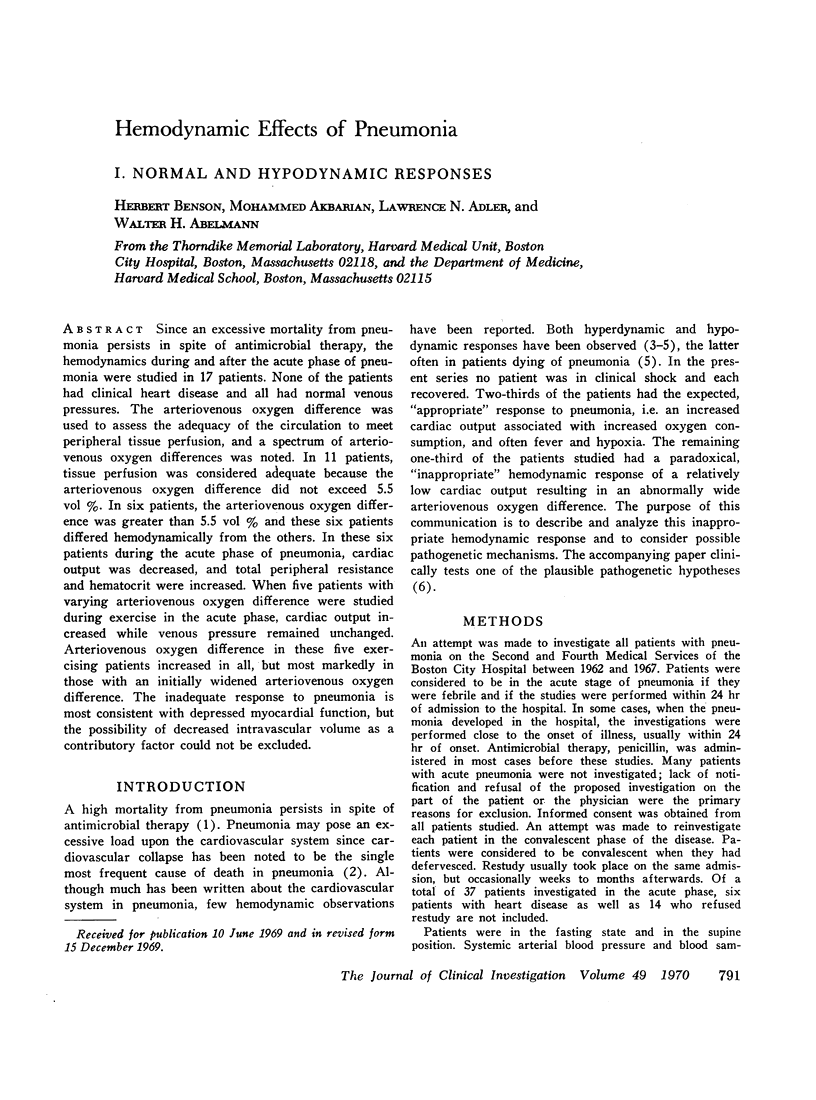
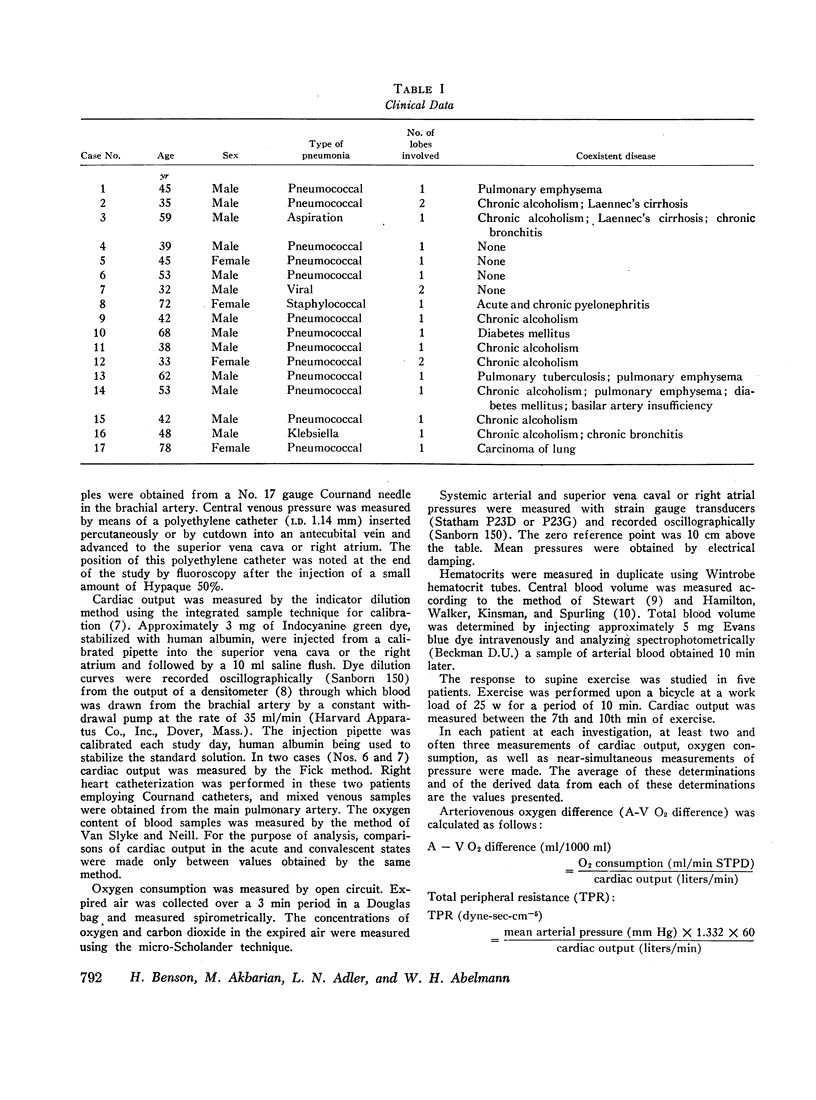
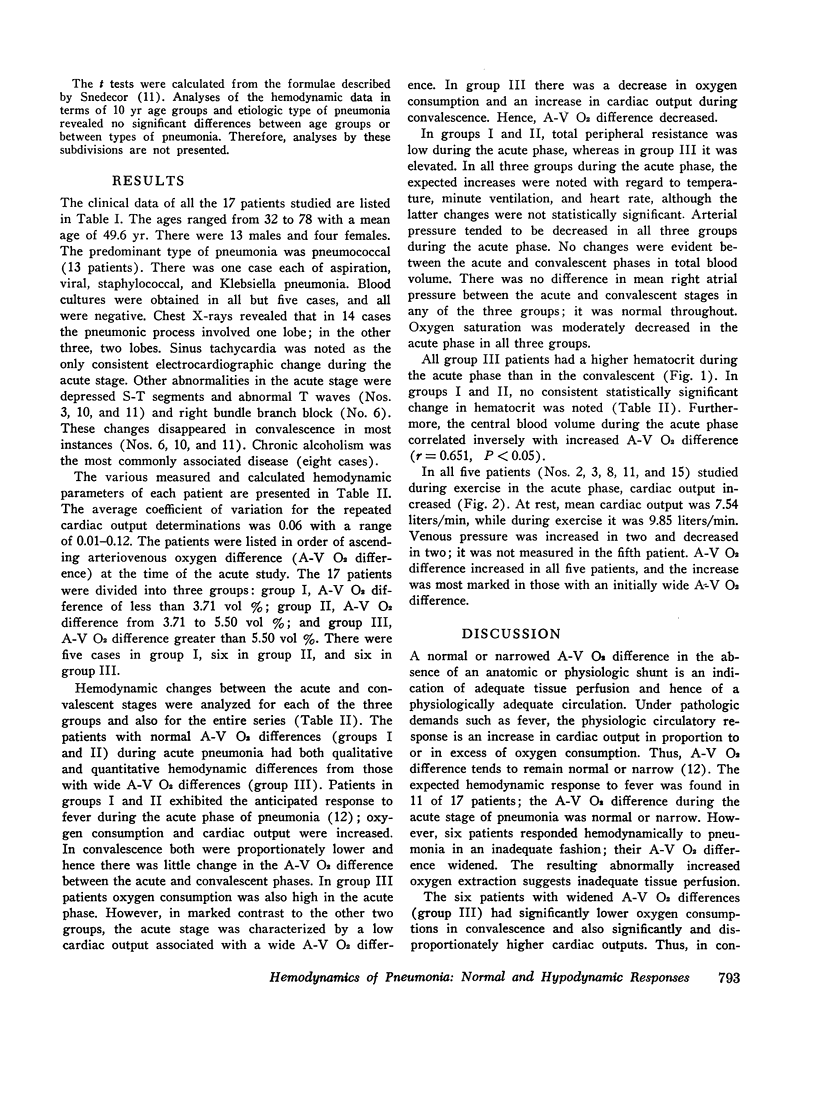
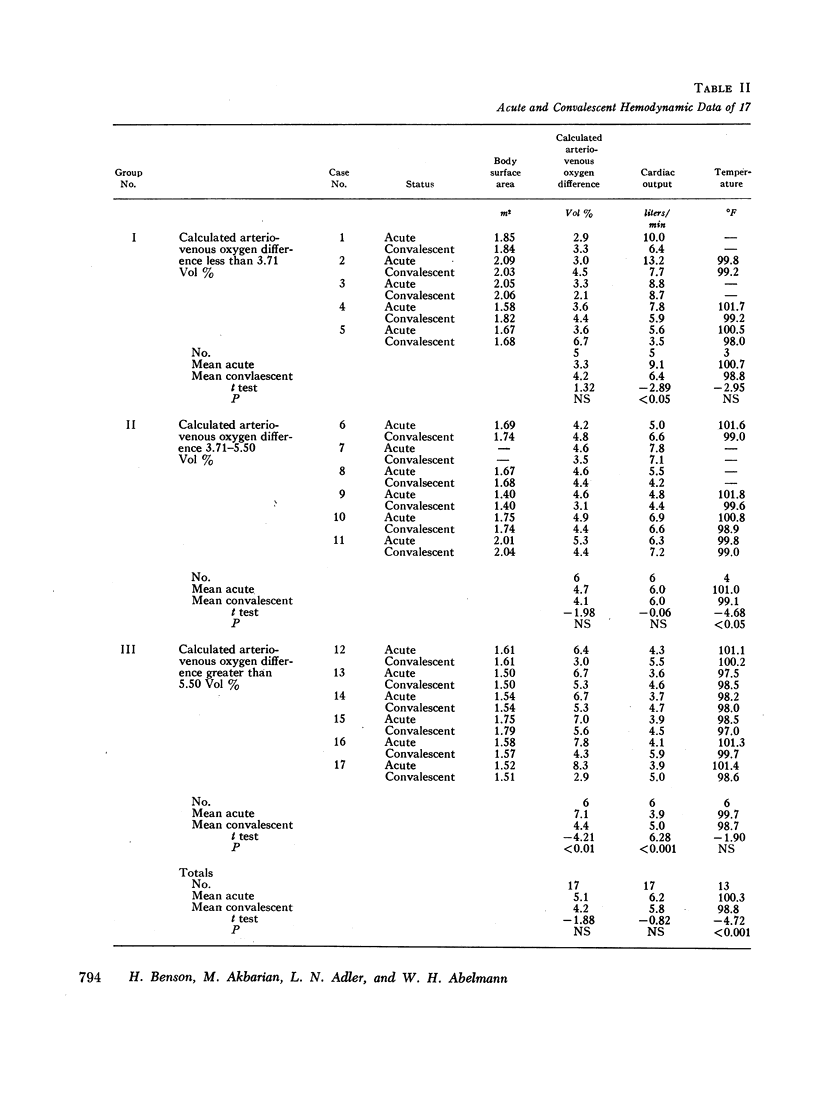
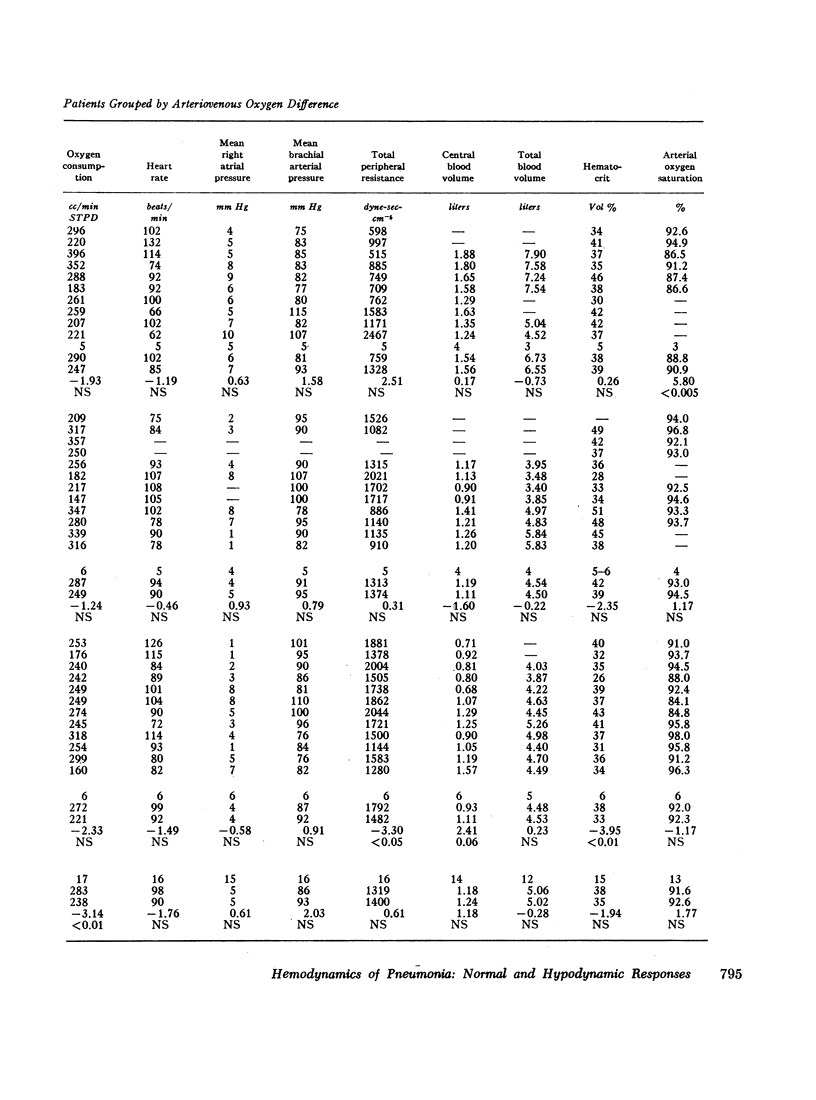
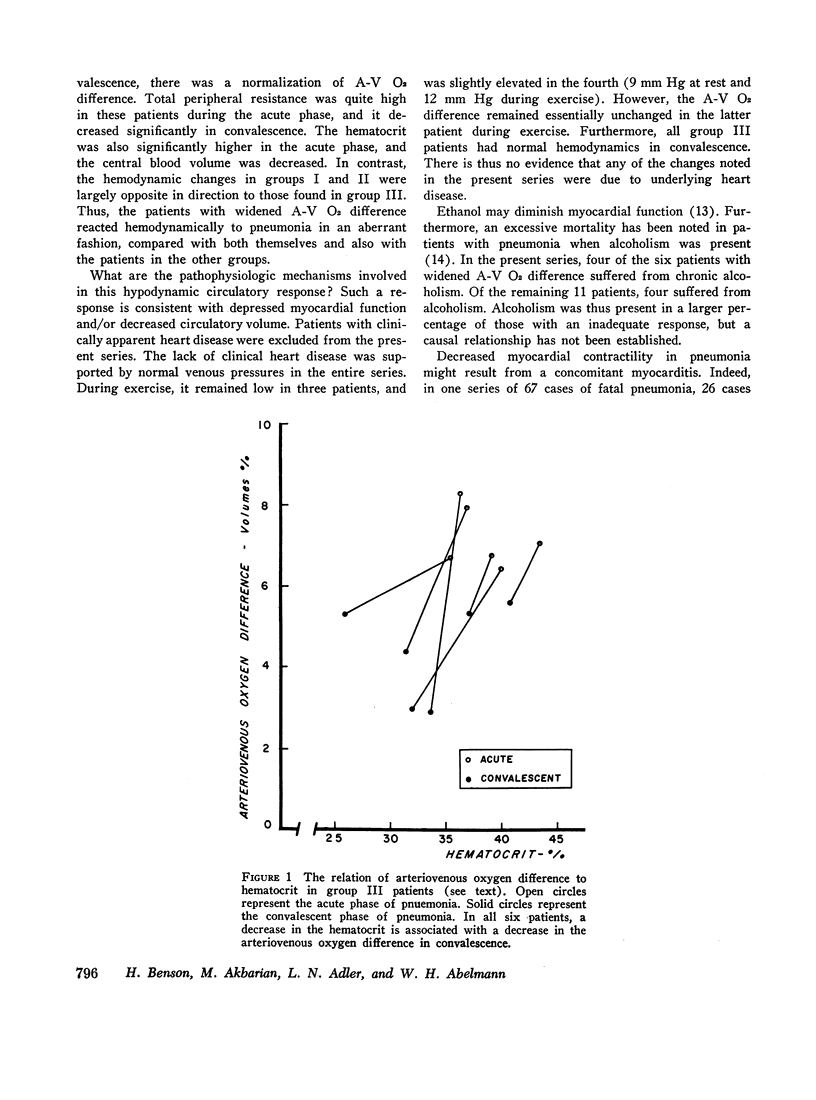
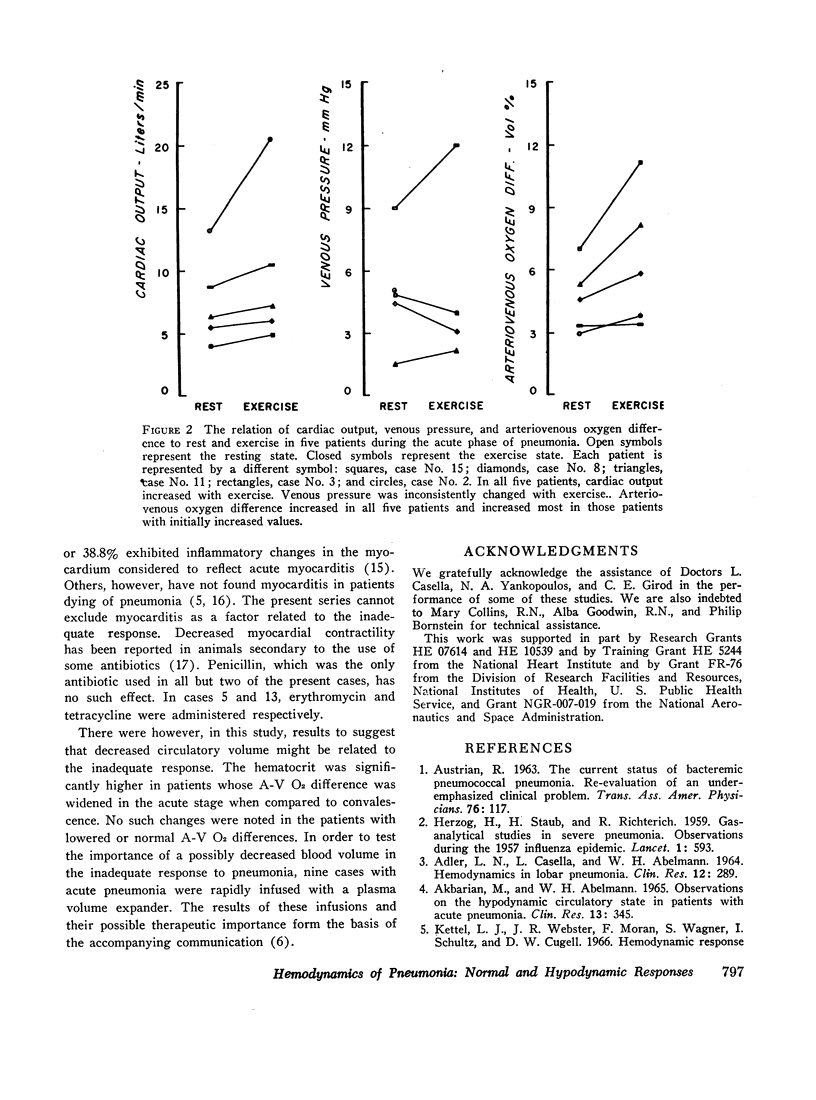
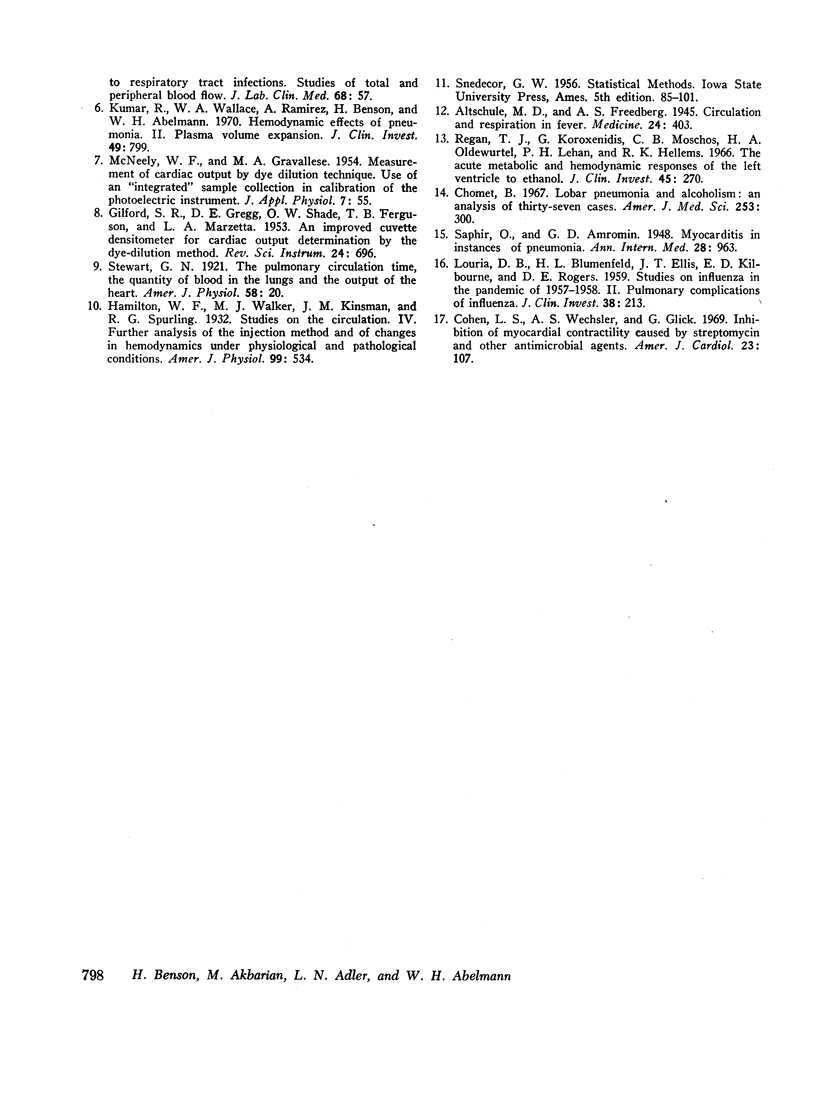
Selected References
These references are in PubMed. This may not be the complete list of references from this article.
- Chomet B., Gach B. M. Lobar pneumonia and alcoholism: an analysis of thirty-seven cases. Am J Med Sci. 1967 Mar;253(3):300–304. doi: 10.1097/00000441-196703000-00006. [DOI] [PubMed] [Google Scholar]
- Kettel L. J., Webster J. R., Moran F., Wagner S., Schultz I., Cugell D. W. Hemodynamic response to respiratory tract infections. Studies of total and peripheral blood flow. J Lab Clin Med. 1966 Jul;68(1):57–69. [PubMed] [Google Scholar]
- Kumar R., Wallace W. A., Ramirez A., Benson H., Abelmann W. H. Hemodynamic effects of pneumonia. II. Expansion of plasma volume. J Clin Invest. 1970 Apr;49(4):799–805. doi: 10.1172/JCI106293. [DOI] [PMC free article] [PubMed] [Google Scholar]
- LOURIA D. B., BLUMENFELD H. L., ELLIS J. T., KILBOURNE E. D., ROGERS D. E. Studies on influenza in the pandemic of 1957-1958. II. Pulmonary complications of influenza. J Clin Invest. 1959 Jan;38(1 Pt 2):213–265. doi: 10.1172/JCI103791. [DOI] [PMC free article] [PubMed] [Google Scholar]
- McNEELY W. F., GRAVALLESE M. A., Jr Measurement of cardiac output by dye dilution technique: use of an integrated sample collection in calibration of the photometric instrument. J Appl Physiol. 1954 Jul;7(1):55–58. doi: 10.1152/jappl.1954.7.1.55. [DOI] [PubMed] [Google Scholar]
- Regan R. J., Koroxenidis G., Moschos C. B., Oldewurtel H. A., Lehan P. H., Hellems H. K. The acute metabolic and hemodynamic responses of the left ventricle to ethanol. J Clin Invest. 1966 Feb;45(2):270–280. doi: 10.1172/JCI105340. [DOI] [PMC free article] [PubMed] [Google Scholar]


